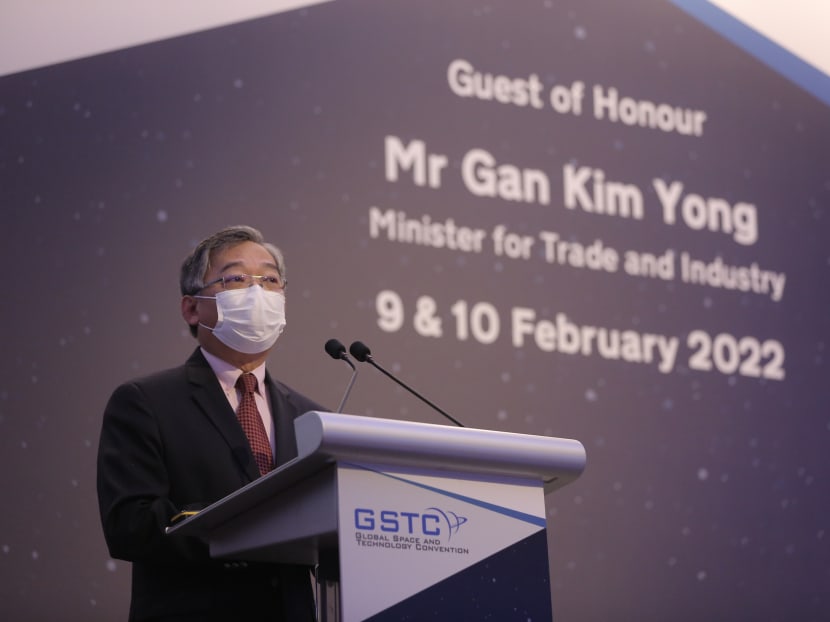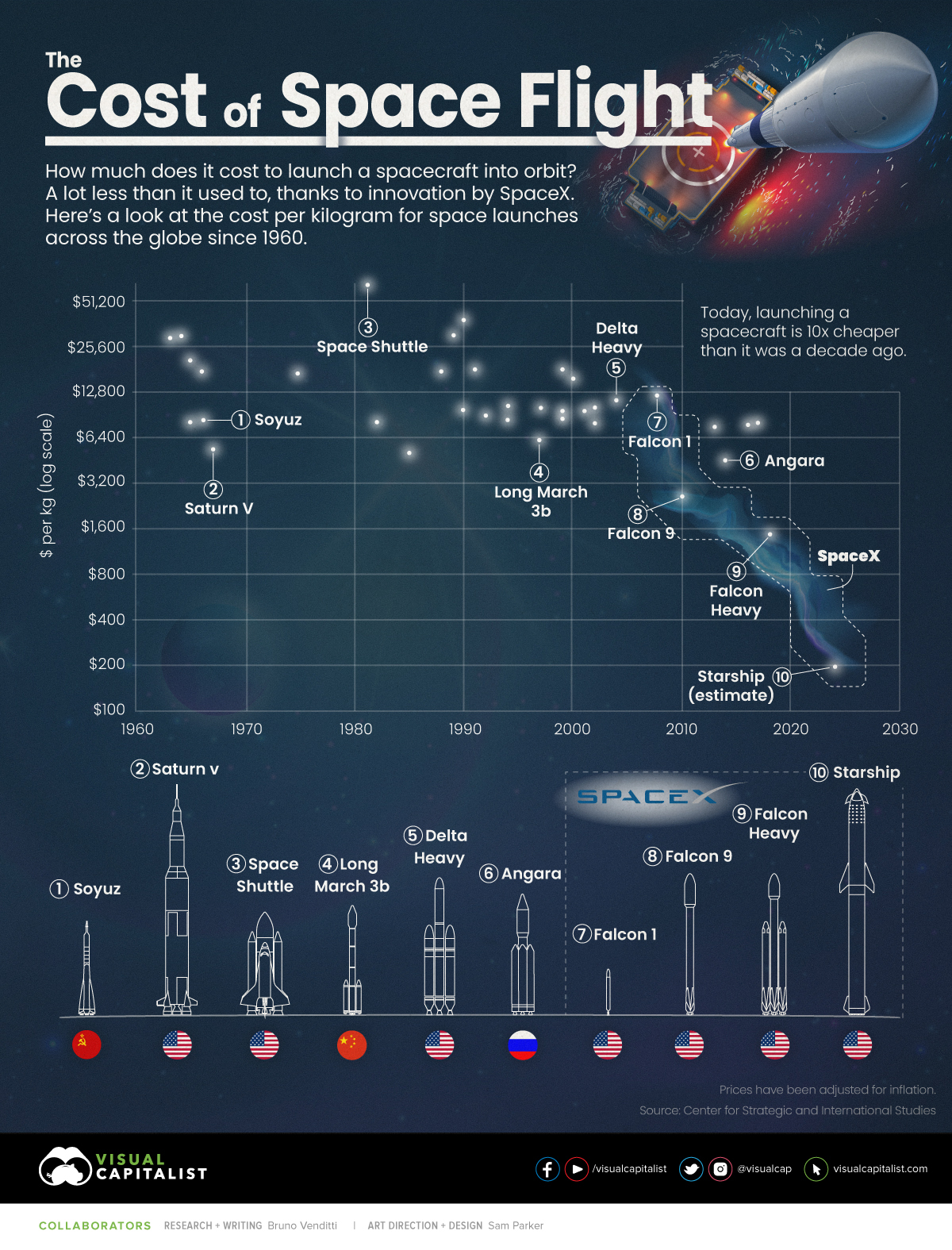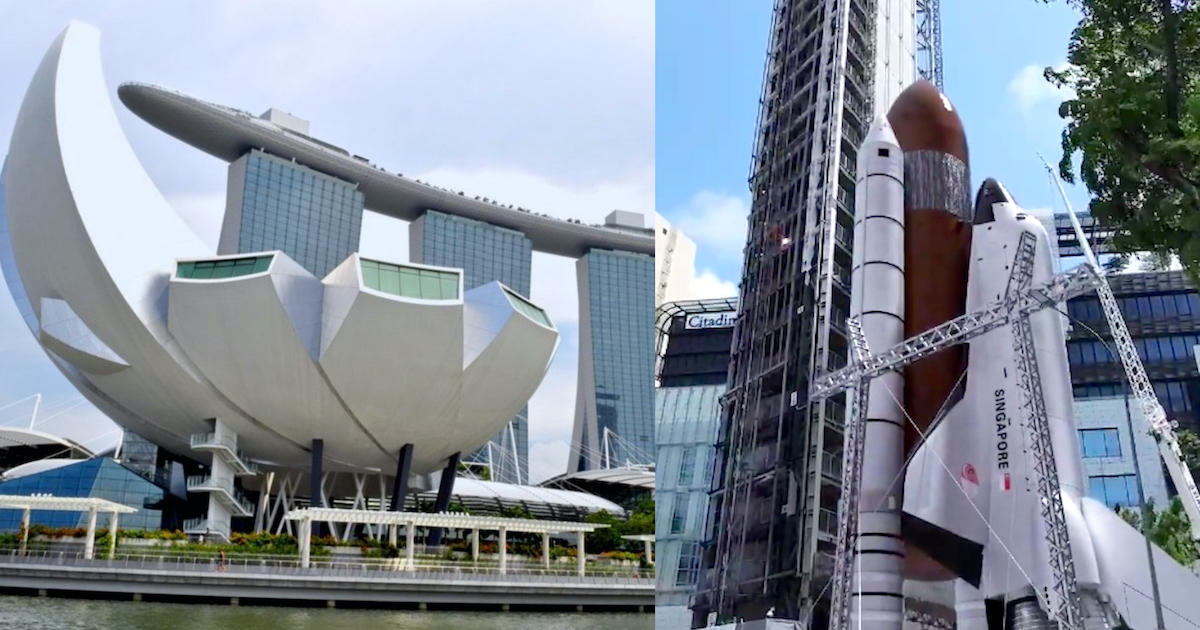Six years ago, Elon Musk shared his vision of humanity as a multi-planetary species, that would achieve this status in part thanks to fully reusable space vehicles like the then-announced Starship.
About a year later, he expanded the concept, showing how the system could not only be used to send astronauts to Mars, but also connect cities around Earth in as little as half an hour, at prices comparable to today’s air fares.
A journey between Singapore and Tokyo could take as little as 28 minutes compared to today’s seven hours.

Many have dismissed these visions as science-fiction, but it seems that SpaceX is gradually — and successfully — peeling away the “fiction” component by proving skeptics wrong. And in the coming two years, its plans are about to bear real fruit.
Starship went from a 3D rendering to a working prototype that is expected to reach orbit this year. And not a moment too soon as SpaceX’s first floating launch pads, made from repurposed oil rigs, are going to be ready for testing by the end of this or early next year.

Meanwhile, the Singapore government has just pledged S$150 million in investment into space research during the Global Space and Technology Convention, which took place in the city last week.

The funds will be injected into Space Technology Development Programme, “which seeks to develop Singapore’s space capabilities in areas such as aviation, maritime and sustainability”.
Admittedly, it’s just a tiny drop in the bucket but then again, a journey of a thousand miles begins with a single step.
Venice of outer space
Singapore is often compared to Venice, which was once a very powerful (even if tiny) republic settled around the Adriatic sea, controlling much of the European trade with the near and far East for centuries.
The legacy of its past greatness, evidenced by its remarkable architecture, is what draws millions of tourists there today, even as the city plays no role in trade anymore.
However, this comparison has always irked me a little.
Back in the day, Venice was near the frontier of competition between Europe and the Middle East. Unlike Singapore, it participated in many wars, conquered and colonised coastal territories and islands of the Mediterranean. It was a geographically privileged, relatively powerful gatekeeper of international trade in the basin.

Singapore is just a peaceful entrepôt bridging East and West. A well-respected, trusted and attractive one, but certainly neither absolutely indispensable (there are other countries hoping to nib away its advantage and the melting Arctic may soon make northern trade route more viable) nor outwardly hostile to anyone.
Times of easy territorial expansion and colonisation are gone, and the entire world has been thoroughly explored. There are few frontiers to cross these days and, consequently, there are few opportunities for a tiny country like Singapore to seek undisputed international leadership at.
…until you think vertically
Lands may be divided and borders largely settled, but that’s on the Earth’s surface. Virgin territories of the cosmos are our new frontier and there, it is still fair game for everyone, including a diminutive — but wealthy — city-state.
While Singapore isn’t exactly what Venice once was for international trade in Europe, it could play such a role in access to outer space.
Skeptics may be eager to dismiss the local government’s pledge to invest in space technologies as publicity stunt or an ill-advised response to a fashionable trend, which exploded with the successful rise of Elon Musk’s SpaceX, but that would be unfair.
It rather comes from a realisation that much of our future will be decided above our heads. Telecommunications, military, hypersonic travel and logistics, and cutting-edge scientific research will require access to orbit (and beyond).
To ensure a prosperous future, Singapore has to leap ahead to take advantage of opportunities that would diversify its risks away from seaborne logistics.
Curiously, just like with sea trade, Singapore is in a privileged position to be one of the critical hubs for cosmic endeavors, perhaps even one of its leaders (particularly in connecting large urban areas to space, as currently rocket launches are carried out from very remote locations).
Firstly, it is conveniently located at the equator, which gives a boost to vehicles launched into space thanks to higher rotational speed of the Earth — it’s both less difficult and costly than launching from higher latitudes.
Secondly, with the advent of offshore launch pads (like the ones developed by SpaceX), its coastal location means it could deploy necessary infrastructure on water, away from the city itself.
Thirdly, as it is the only highly developed country at the equator, and one with a robust local manufacturing and engineering sectors, it could provide a necessary technological base that would be very close to the launch location. This includes not only parts and maintenance (e.g. by experienced offshore companies) but also products like specialised fuels for all kinds and sizes of rockets, delivered by Singapore’s advanced petrochemical sector.
Southeast Asia is particularly starved of launch locations, although Indonesia has already offered a new spaceport to SpaceX, located on Biak island in West Papua. But like in all other cases, it’s in the middle of nowhere, creating logistical hurdles.

Admittedly, there’s no lack of geographically suitable locations around the world that could serve as launch sites, but there are none that would combine all the advantages of Singapore.
The immediate future of space tech is on Earth
Enough of blue sky thinking though, we have to come down to Earth now, both literally and figuratively.
For any technology to develop, there has to be a logical business case. Singapore won’t dump billions of dollars into development of infrastructure that may not yield any benefits for years, if ever.
Since we’re decades away from space mining of resources that may be rare on Earth (what would justify venturing out to get them), the only commercial activities that have a net positive monetary value are putting things into orbit and transporting things and people around the planet.
It’s in this spirit that Elon Musk touted SpaceX’s upcoming Starship five years ago. Not only as a rocket taking humans to Mars, but also one that can get them from point A to B on Earth — much faster than not only traditional jet flight, but even supersonic planes that are in development today.
While we can expect the next generation Concorde to travel at top speeds of 2,000 to 3,000 km/h, the top speed on a brief orbital flight would be as much as 27,000 km/h. Any place on Earth would be within a 30 to 60 minute journey, with most locations approximately half an hour away.
Even if we assume some time would be spent — like at modern airports — on boarding and security procedures, it still means a journey of around two hours anywhere in the world.
The floating platforms that SpaceX has ordered are meant to aid that. Located at a distance of about 20 miles from the shore (due to safety and noise constraints), they would serve as spaceports for Earth-to-Earth travel, at speeds that no plane could possibly compete with.
And while Elon Musk, in his typical hyperbolic fashion, touted tickets as cheap as ordinary economy class, I’m sure that even at first-class prices, there would be many takers to get to the other side of the globe in less time it can often take to cross a busy city.
Early calculations suggested a possible ticket price of US$1,200 per head, should the rocket fit an equivalent of an A380 (853 passengers). But it’s easy to see that at US$10,000 it should easily get about 100 each time, in business/first-class equivalent conditions.
Such a low cost is achievable thanks to full reusability of the rocket, which reduces operational costs to just fuel and maintenance.
During last week’s presentation at the company’s Starbase in Texas, Elon Musk stated a target of flying each rocket every six to eight hours, with the first-stage refuelling process taking as little as 30 minutes, thanks to the new launch-and-catch tower designed by SpaceX engineers in just a year to accelerate the vehicle turnaround times.

But to get people on board, they still have to get there — and current space launch centres are often located hundreds of miles away from major cities.
Singapore, however, is among the best-suited to be one of the first to build one close enough.
Spaceport… Pedra Branca?
I mentioned the 20 mile (32km) distance that any future spaceport would have to be located away from the nearest urban centers as rockets are rather loud — far louder than traditional jet airliners.
For frequent, daily flights (which are the ultimate goal), the noise levels would not be acceptable anywhere near a major city.
So, the question now is: where can Singapore find a place 20 miles away from the shore when the island itself is little over 20 miles long, east to west?
Indonesia’s Batam, home to over a million people, is just 10 miles away. Johor is right across the border. All in all, there are approximately 7.5 million people living within a 20 to 30 mile radius.
Rockets cannot just take off and land at Changi, with noise and vibration tearing nearby buildings (and people’s eardrums) to pieces.
Fortunately, and unexpectedly, Singapore happens to have just the place for the job.

The lengthy territorial dispute between Singapore and Malaysia over ownership of a few rocky outcrops out to the east of the Malay Peninsula, was concluded by International Court of Justice in 2008, confirming Singapore’s sovereignty over Pedra Branca and Malaysian over nearby Middle Rocks.
While it may have thus far seemed to have been a rather petty squabble over distant and largely useless rocks that barely stick above the water (that few Singaporeans will see), the requirements of space launches may suddenly make them very valuable.
It does not seem to be a far-fetched idea to consider repurposing the area for the needs of a rocket launch and landing facilities, of a size comparable to the offshore rigs that SpaceX is developing now (or even larger). Alternatively, it could perhaps act as a mooring location for floating platforms or a support and control centre of sorts.
Most importantly, however, it is both close enough to the city to allow a swift journey (one could even imagine using existing Changi facilities for the purpose) over sea or a short hop by helicopter, and far enough not to be a nuisance to anyone.
The nearest shores are 10 miles away and home only to a handful of people in a few coastal towns and villages.
If Singapore wants to seriously engage in space travel and retain full control over the infrastructure, this is the only place it could do it at. The alternatives are a cooperation with Malaysia and/or Indonesia, and while certainly possible, we know it may often not go to plan.
Space for the masses
Until recently, space travel for mere mortals was just science fiction. But with SpaceX’s contributions to lowering launch costs, today’s business elites are now already able to afford a journey to the orbit and soon, even around the Moon, like Japanese billionaire Yusaku Maezawa.
While the price tag for these experiences is still in the millions of dollars, progress made on new launch vehicles promises to cut the costs even further, gradually opening space to thousands and then millions of travelers.

Leadership in this private market space race is going to be taken by countries and cities that can provide the most attractive combination of conditions: large and wealthy enough populations, attractiveness to travel (particularly for business), regulatory clarity, political stability, engineering expertise, logistical connectivity and geographically suitable launch locations.
Despite its tiny size, Singapore appears to be ticking all of the boxes.
And if the market trends prove to be promising, it can deploy nearly unlimited amounts of capital from its reserves, that are invested in profitable ventures in and out of the country, just like it painstakingly built stellar reputation of Singapore Airlines over the years.
With the right timing and a dose of good luck, it can open up a literally unlimited space of opportunities and become a gateway to the orbit and beyond — with the added benefit of abandoning its Earthly territorial limitations, that will no longer constrain its future.
Shop and support the best homegrown brands on VP Label now:
Featured Image Credit: Sansan Blog / HardwareZone Forum








